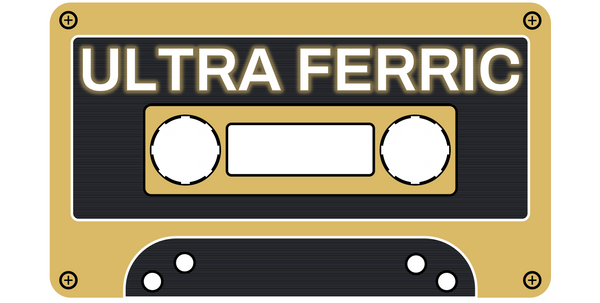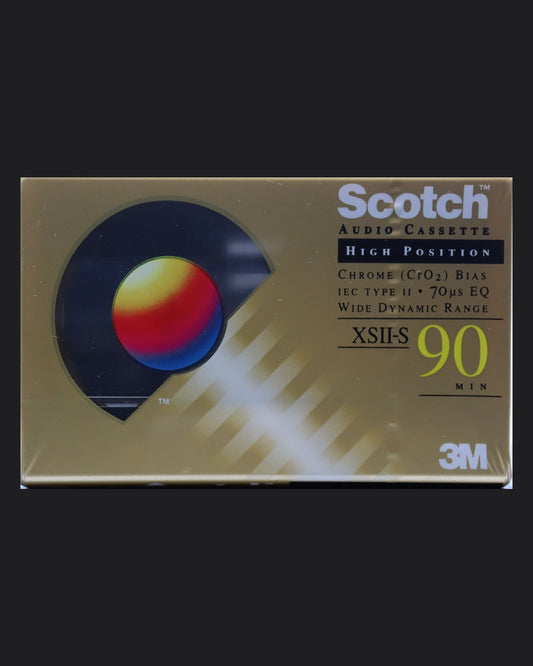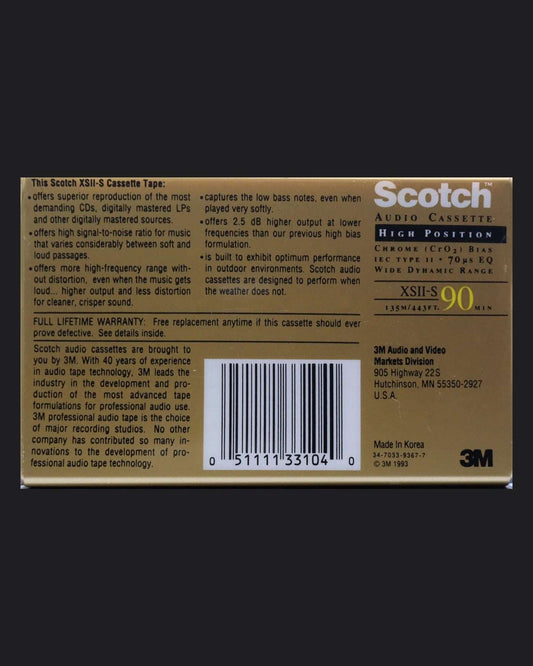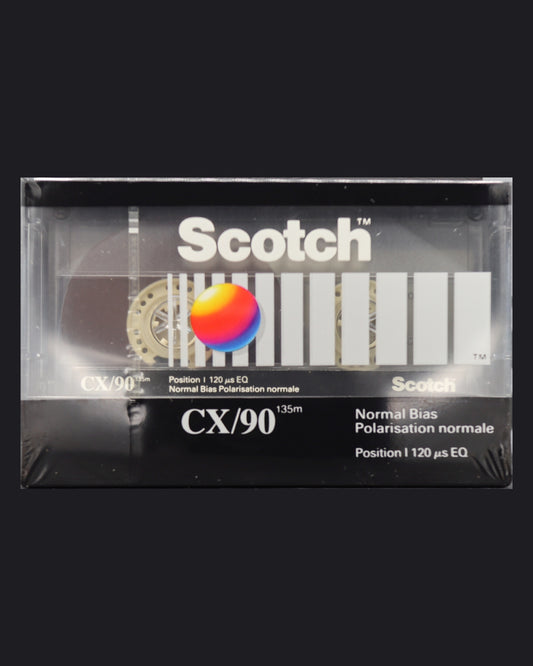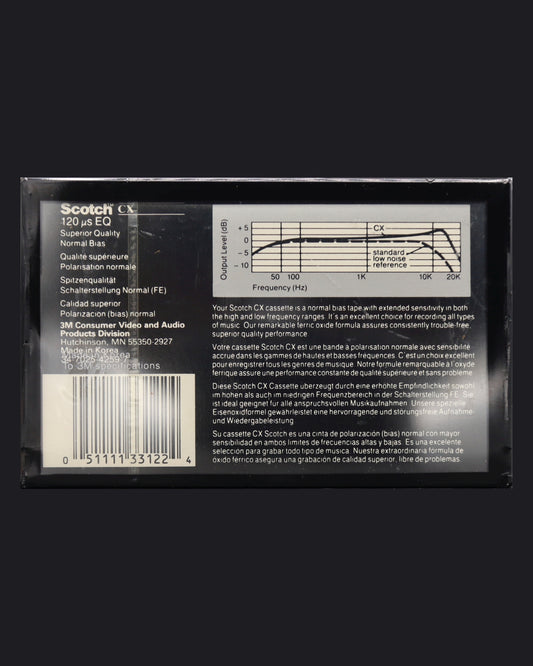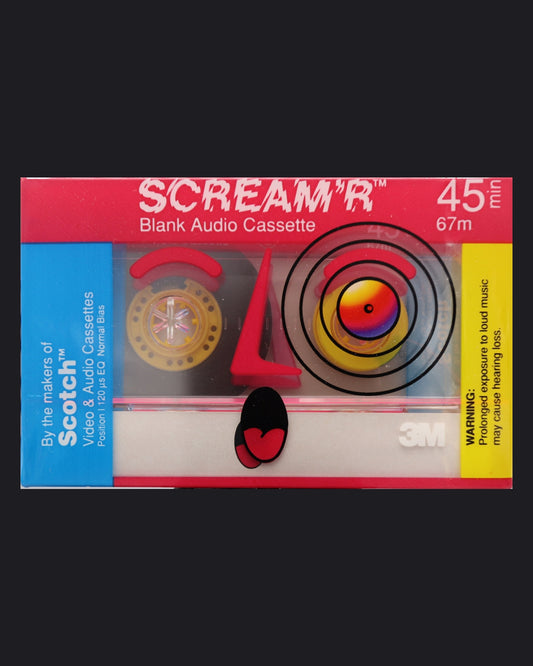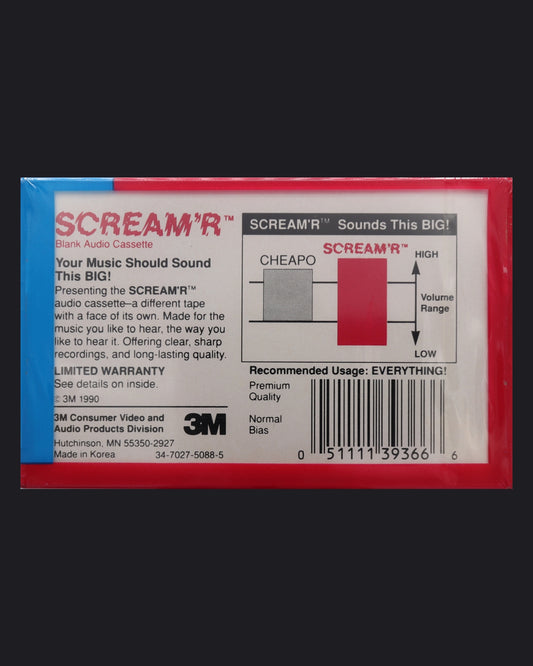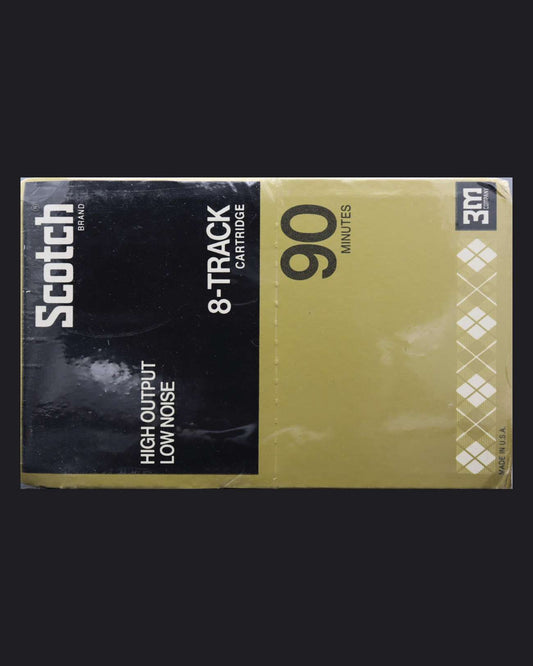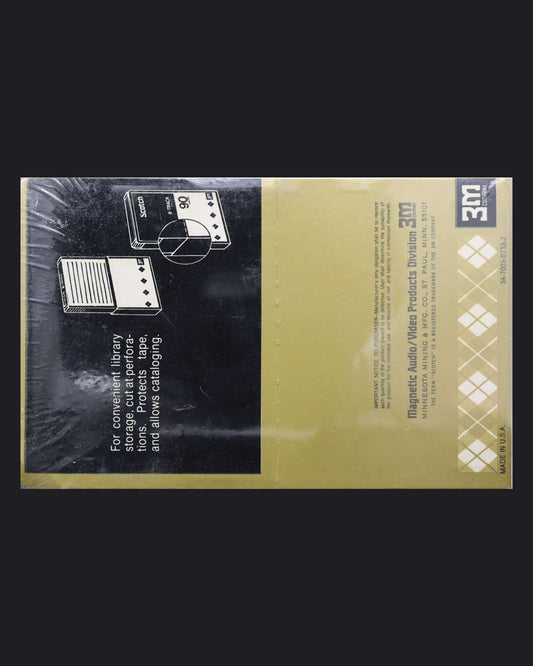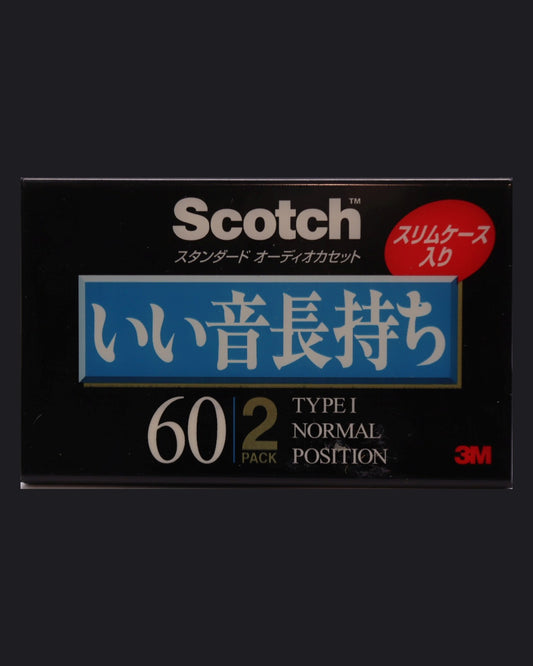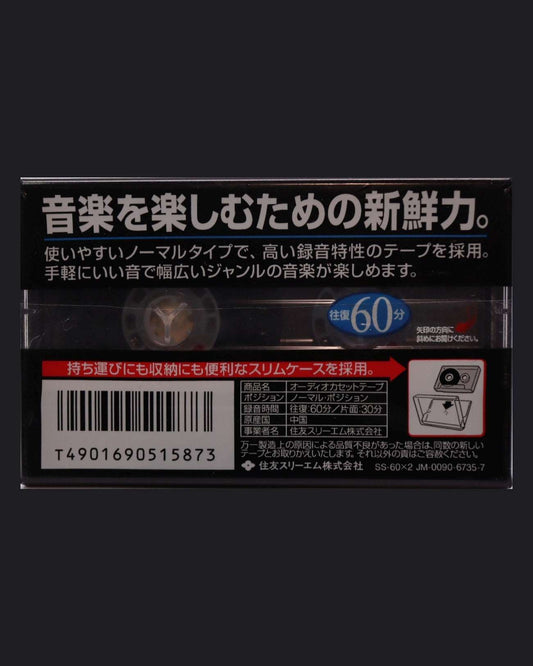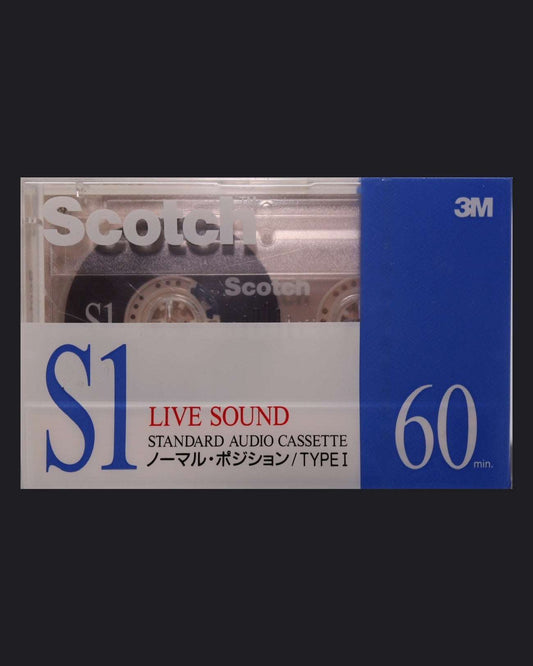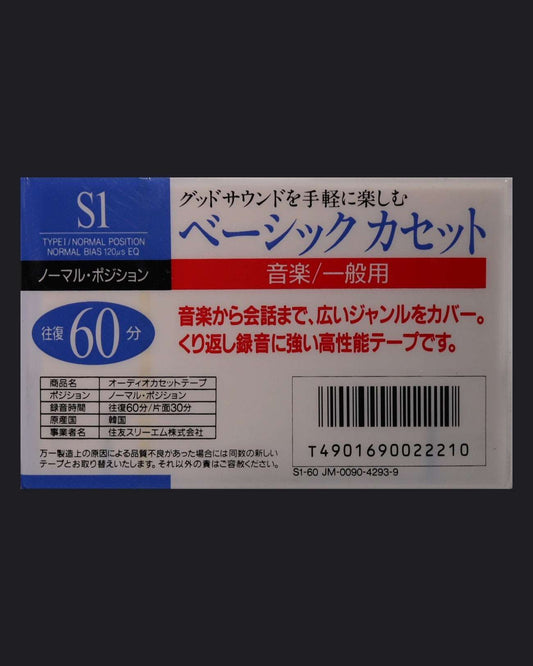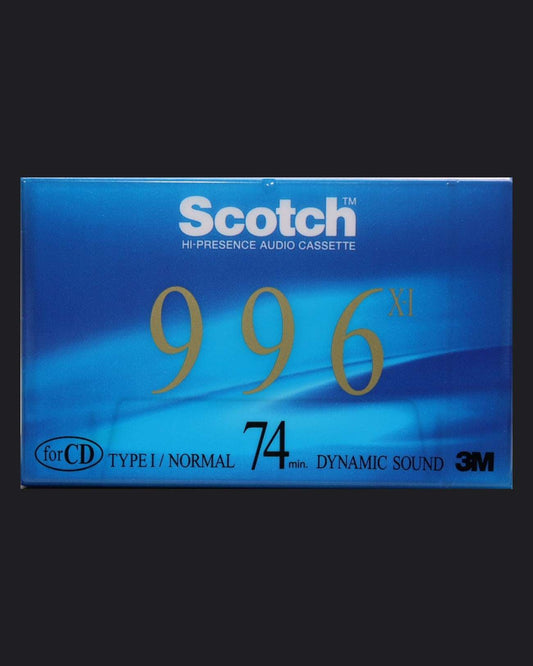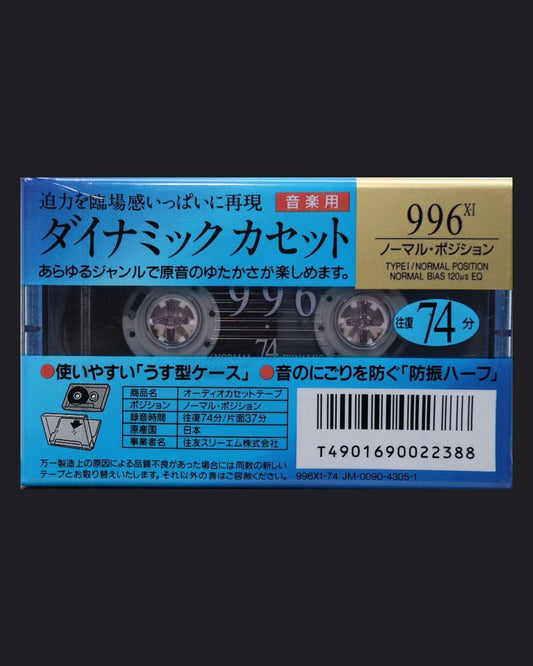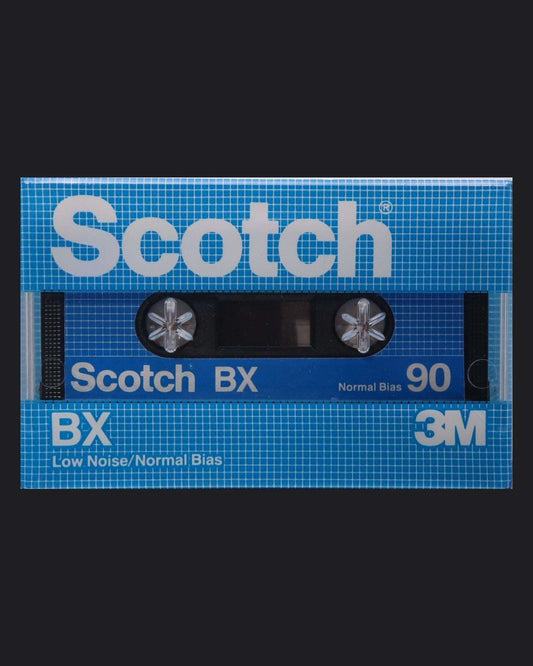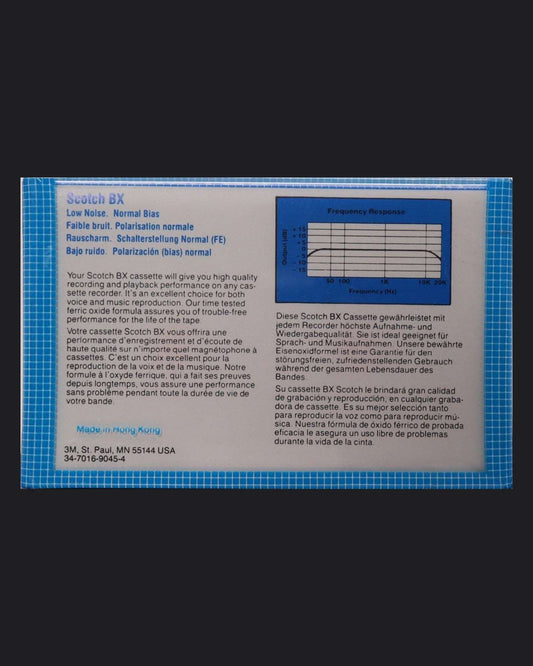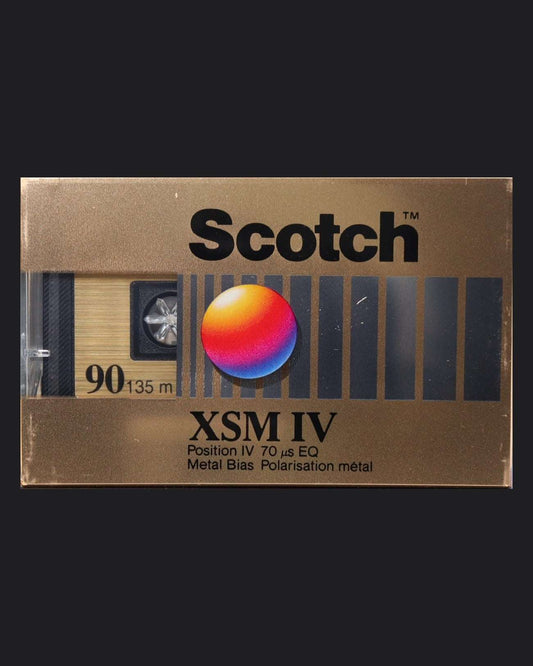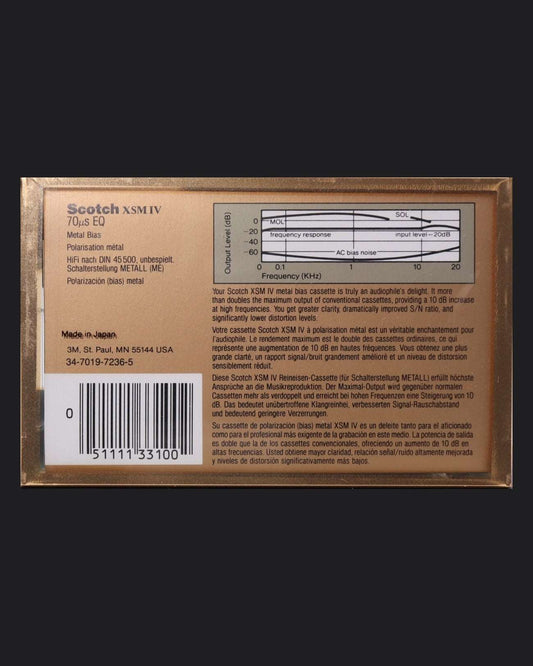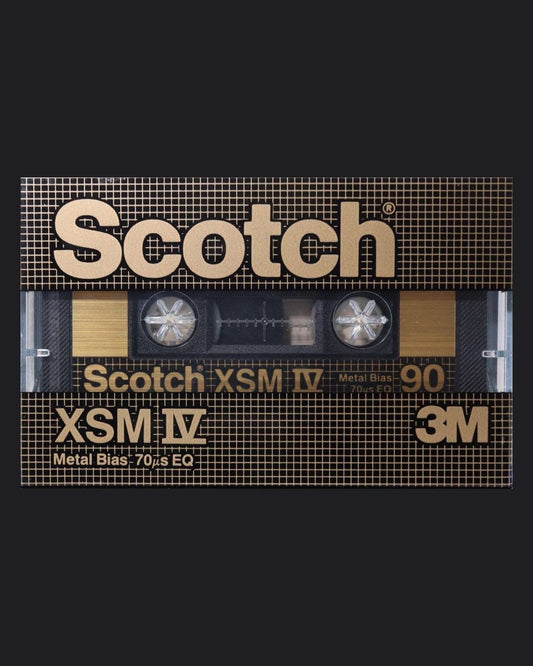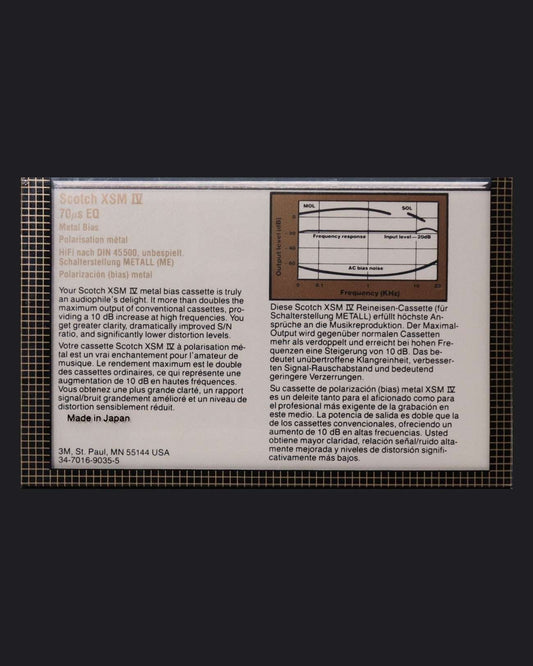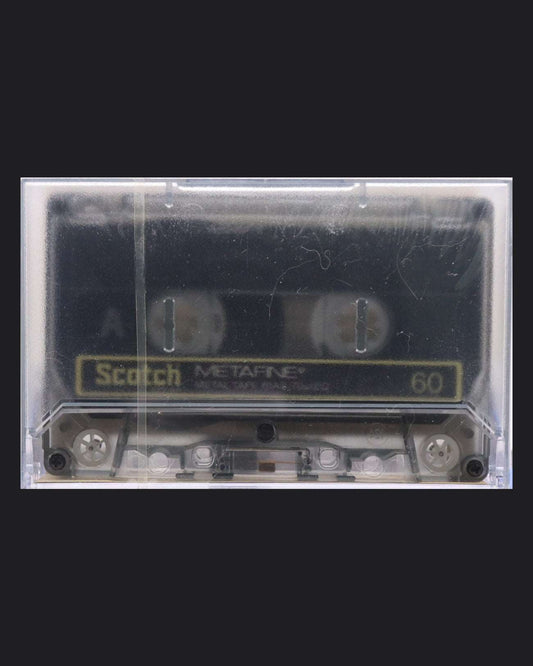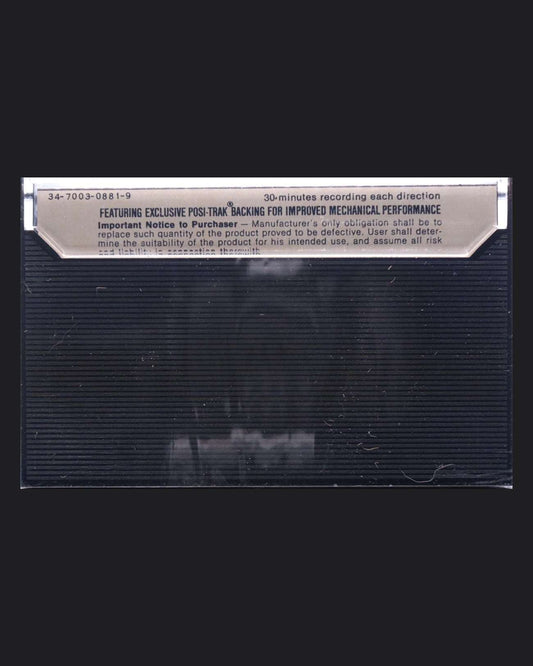Collection: Scotch Cassette Tapes
Scotch was the brand name used by 3M, a conglomerate known for its innovation in a variety of fields, including adhesives, laminates, and magnetic media. The brand's history with magnetic tape began after World War II, capitalizing on the burgeoning field of sound recording.
In the late 1940s, 3M introduced its first audio tape under the Scotch brand. This was a significant development in the recording industry, as it provided a new medium for sound recording, which was previously dominated by wire recorders and vinyl records. The Scotch magnetic tape was a reel-to-reel format, which quickly became standard in both professional and consumer markets.
By the 1960s, with the invention of the compact cassette by Philips, Scotch began producing its own cassette tapes. These tapes were known for their durability and sound quality, and they featured a distinctive look, often with a tartan pattern that played off the Scotch name—a clever marketing touch that made the brand recognizable.
Scotch's innovation wasn't limited to aesthetics; they were also at the forefront of technological advancements. In the 1970s, they introduced the "Low Noise" series, which improved the signal-to-noise ratio of recordings. The 1980s saw the introduction of the "High Energy" cassette tapes, which boasted a higher output and better sound fidelity, catering to the needs of high-end audiophiles and the home recording boom of the era.
The brand also made significant strides in other types of magnetic media, including videotapes and floppy disks, which were essential to the computing and video industries of the late 20th century.
However, as the digital age dawned, the demand for analog media declined. 3M, always focused on innovation, shifted its priorities to new technologies and markets. The production of Scotch magnetic tapes was eventually phased out in 1996, but the brand's impact on the recording industry remains a significant part of its legacy. Today, Scotch tapes are a nostalgic reminder of the analog era, and their robustness and quality have made them a cherished item among collectors and enthusiasts of vintage audio media.
-
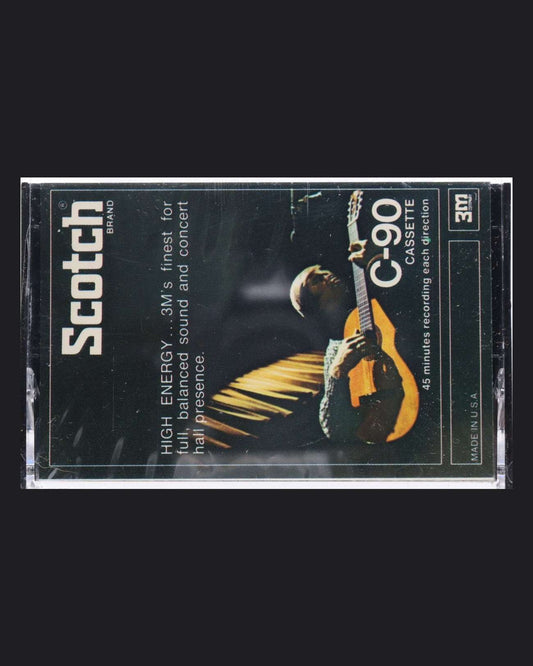
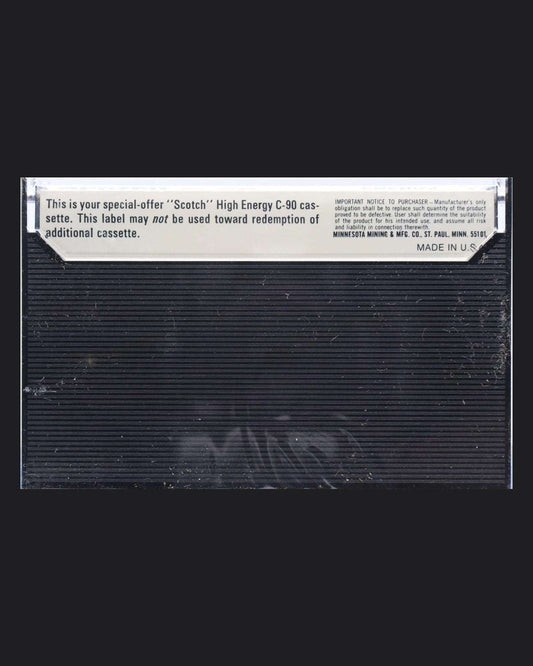 On Sale!
On Sale!Scotch High Energy (1973-1974 US)
Regular price $5.00 USDRegular price$11.62 USDSale price $5.00 USDOn Sale! -
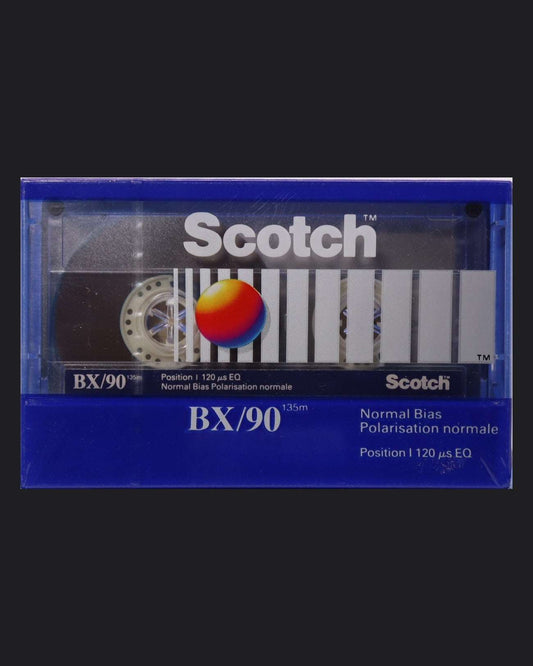
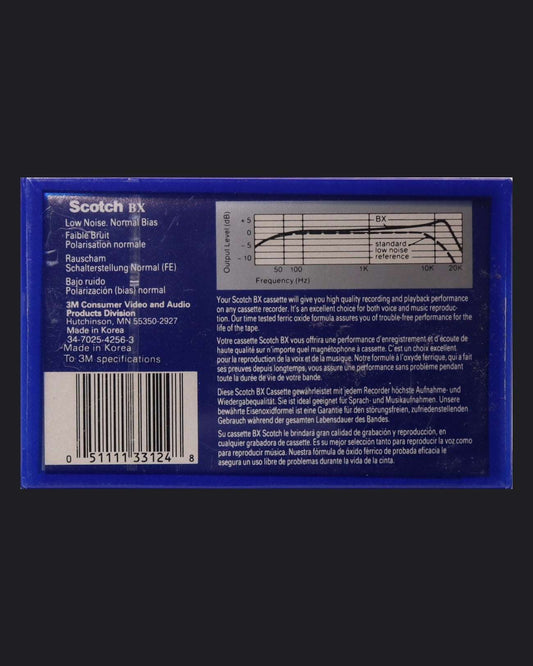 On Sale!
On Sale! -
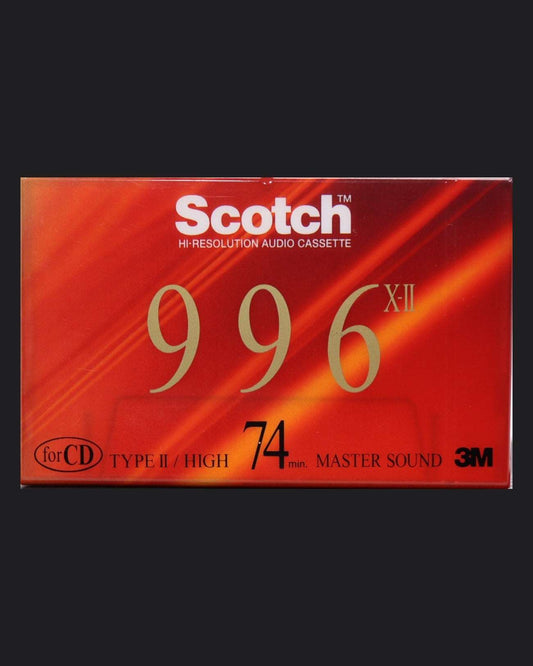
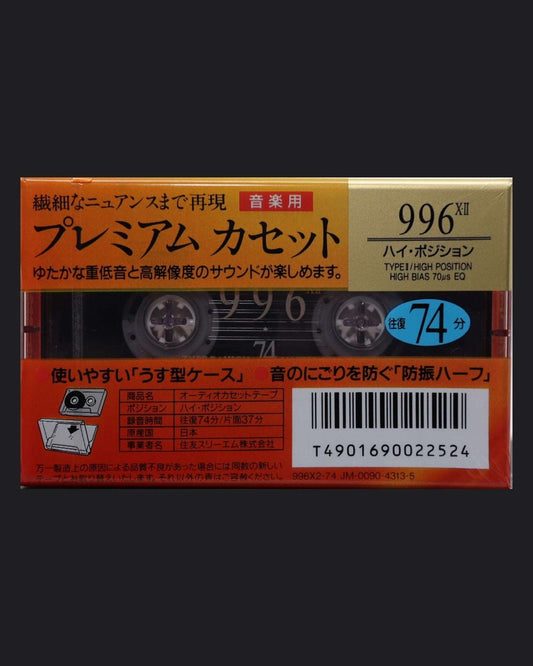 Sold out
Sold outScotch 996 X-II (1993-1996 JP)
Regular price From $15.09 USDRegular price -
Scotch XS II-S (1993-1996 US)
Regular price From $12.55 USDRegular price -
Scotch CX (1990-1993 US)
Regular price From $11.55 USDRegular price -
Scotch SCREAM'R (1990 US)
Regular price From $10.18 USDRegular price -
Scotch High Output Low Noise 8-Track Tape (US)
Regular price $13.39 USDRegular price -
Scotch Standard (JP)
Regular price $27.30 USDRegular price -
Scotch S1 (1993 JP)
Regular price From $11.30 USDRegular price -
Scotch 996 X-I (1993-1996 JP)
Regular price From $14.61 USDRegular price -
Scotch BX (1982-1986 US)
Regular price From $6.44 USDRegular price -
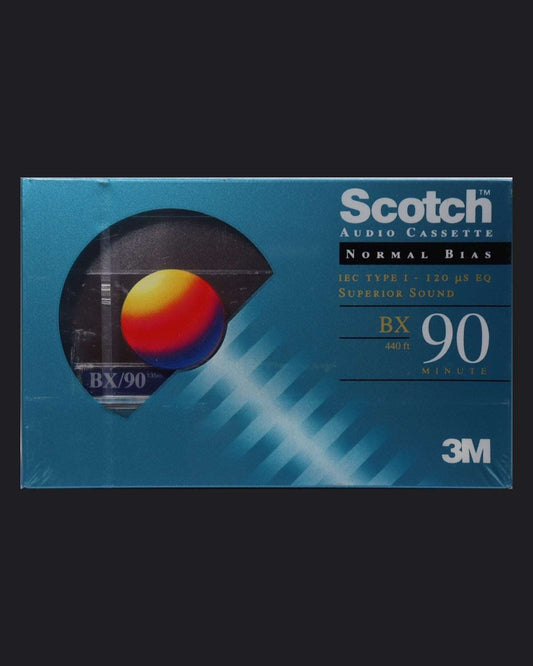
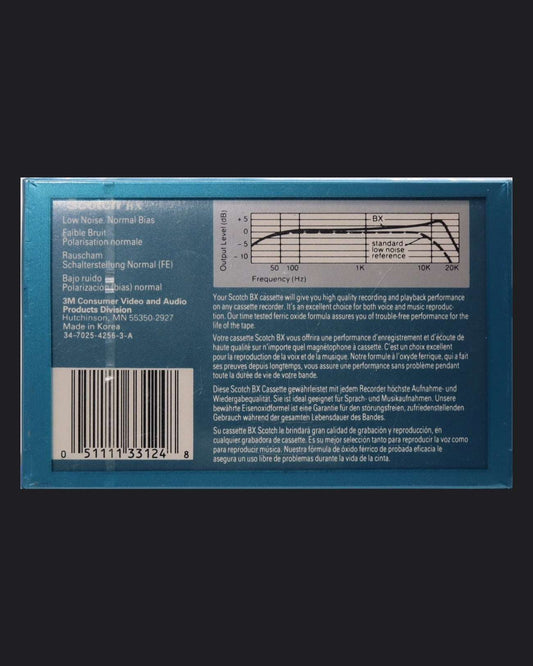 On Sale!
On Sale!Scotch BX (1993-1996 US)
Regular price From $7.48 USDRegular price$9.69 USDSale price From $7.48 USDOn Sale! -
Scotch XSM IV (1987-1989 US)
Regular price From $38.85 USDRegular price -
Scotch XSM IV (1982-1986 US)
Regular price From $42.68 USDRegular price -
Scotch Metafine (1979-1981 US)
Regular price From $26.49 USDRegular price -
Scotch Classic (1975-1976 US)
Regular price From $10.31 USDRegular price
